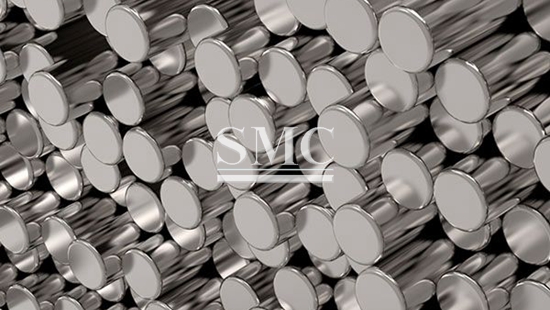
- Company overview The heart of SMC Vision & Philsophy Partnership Certifications Company culture
- Our service Design and Engineering Maintenance and Service Examine Production Line Upgrade and Transformation Storage and Logistics Processing, Trading and Distributor
- Management Our history Global responsibility Info Center
- Procurement center Internship
- Metal Steel Products Stainless Steel Products Aluminum Products Copper Products Galvanized Steel and PPGI Special Alloy Building Material
- Containers ISO Standard Container Equipment Container Storage Container Refrigerated/Reefer Container Offshore Container Container House Tank Container Container Fittings Container Trailer
- Gas Cylinder & Fire Extinguisher Cryogenic Liquid Cylinder Oxygen Gas Cylinder Storage Tank CNG Gas Cylinder LPG Gas Cylinder Hydrogen Gas Cylinder Nitrogen Gas Cylinder Industry Gas Cylinder Fire Extinguisher
- Metal Machinery Forming Machine Cutting Machine Processing Machine Bending Machine Block Machine Other Machinery Motor Spare Parts
- Mechanical Products Miscellany Mooring Equipment Marine Equipment Vehicle Industry Pressure Vessel Conveyor Belt Laser Equipment Bearing
- Electrical System Power Distribution Automation Electrical Cable Solar Power System Electric Protection System Transformer Production Line Lighting System
- Project Plastic Pipes and Pipe Fittings Fiberglass Reinforced Plastic Pontoon System
Chinese Academy of Sciences Discovered High-Temperature Amorphous Alloys by Material Genetic Engineering Method
Among alloy materials, amorphous alloys (also known as metallic glass) are a new class of multi-component alloys. They have unique disordered atomic structures, excellent mechanical and physicochemical properties, and attract attention in many fields such as materials science and condensed matter physics. Amorphous alloys can have up to 6.0 GPa, 15 times higher strength than ordinary steels (such as Co-based amorphous alloys), and can be superplasticized like plastic. The multi-component characteristics of amorphous alloys provide a large number of elemental ratios, enabling performance regulation to be achieved over a wide range of compositions, providing a broad application scenario for amorphous alloys. For example, iron-based amorphous alloys with excellent soft magnetic properties have been widely used in high value-added products such as transformers and high-speed motors. However, the complexity of the composition of the amorphous alloy's elemental diversity also seriously hinders the design and effective development of high-performance new materials. In the past 60 years, nearly 100 research groups around the world have obtained more than a dozen amorphous alloy components that can be applied on a large scale. A large number of amorphous alloy materials with special properties have not been discovered.
For amorphous alloys, the most important and fundamental parameter is the ability to form amorphous, because it directly determines how large an alloy composition can form a completely amorphous material and exhibits the unique properties of an amorphous alloy. Exploring the alloying system with strong amorphous forming ability has always been the core scientific problem in the field of amorphous alloys, and it is related to the key technical problems in the application of amorphous alloy engineering. However, the formation process of amorphous alloys involves multi-disciplinary cross-basic problems and multi-body interactions of physics, chemistry, materials, etc. The complexity makes the existing theoretical and computational simulations unable to accurately predict the alloy composition. For many years, the development of amorphous alloys has remained at the traditional “trial and error” stage, and the exploration process has been inefficient and long-lasting, which has led to major challenges and bottlenecks in the material innovation of amorphous alloys.
Material genetic engineering is a new concept with the main goal of accelerating material research and material exploration in recent years. The high-throughput experiment is the basic means to directly select new materials and obtain experimental big data in massive samples. In high-throughput experiments, combined preparation enables parallel synthesis of a series of samples, combined with high-throughput characterization of structure and properties, material genetic engineering can screen out new materials with expected properties in a short period of time, greatly improving the development of new materials. effectiveness.
Recently, the Institute of Physics of the Chinese Academy of Sciences/Beijing National Center for Condensed Matter Physics Liu Yanhui, Wang Weihua and the Yale University, Johns Hopkins University, and Tohoku University of Japan formed a cooperative team to develop a unique Qualcomm using the concept of material genetic engineering. The quantitative experimental method has made breakthroughs in the composition design and exploration of high-performance amorphous alloys, realized the rapid screening of amorphous alloys, and developed a new system of high-temperature and high-strength amorphous alloy materials. The high-throughput experimental method in the field of amorphous alloys is expected to break through the bottlenecks encountered in the exploration of amorphous alloy materials caused by compositional diversity and complexity, solve the problem of forming amorphous alloys, and realize new amorphous alloy materials. Efficient exploration, obtaining more high-performance amorphous alloy materials, broadening the application range of amorphous alloys in high-tech fields.
The team used a known empirical criterion and physical quantity relationship to design a new Ir-Ni-Ta-(B) material system that is likely to have strong amorphous forming ability. However, the arrangement and combination of these elements is ever-changing, and it is difficult to predict which specific components have stronger amorphous forming ability. It is time-consuming and labor-intensive to use the traditional "trial and error" method for experimental verification. Using the idea of material genetic engineering, Liu Yanhui and Wang Weihua team used a multi-target magnetron sputtering co-deposition technique to prepare a combined sample containing thousands of alloy components. The high-flux structure characterization was used to determine the range of amorphous components. Using the correlation between the resistivity of amorphous alloys and the ability to form amorphous, the team further proposed a high-flux resistance measurement method for determining the ability of amorphous formation, which was determined in the Ir-Ni-Ta-(B) alloy system. The optimum range of amorphous forming compositions and high-temperature bulk amorphous alloys with excellent overall properties are obtained.

Compared with the previous high-throughput experimental methods, the new method proposed by the team is characterized by high efficiency, non-destructiveness and easy promotion. The method does not require any pretreatment or subsequent treatment of the combined sample. The test cycle is short, and the optimum range of amorphous forming components can be determined among tens of thousands of alloys in 1-2 hours; the measurement and characterization methods used are not It can cause damage to the combined sample, and can measure multiple physical parameters at the same component point, and can ensure accuracy when establishing the relationship of physical parameters; high-throughput resistance measuring equipment is inexpensive and can be accepted by the majority of laboratories, which is beneficial to more research teams conduct high-throughput experiments.
Amorphous alloys are metastable metal materials that age or transform into crystalline alloys at a certain temperature, losing the excellent properties of the amorphous state. Therefore, the service temperature of an amorphous alloy needs to be below its glass transition temperature. At present, the service temperature of most amorphous alloys is around 300 °C, which makes its application limited in many fields. The team's Ir-Ni-Ta-(B) amorphous alloy developed by the material genetic engineering concept has shown unprecedented comprehensive advantages in high temperature mechanical properties, thermal stability, processing and forming properties, corrosion resistance and oxidation resistance. The glass transition temperature of the Ir-Ni-Ta-(B) amorphous alloy exceeds 800 ° C, which is 400 ° C higher than the most widely used zirconium-based amorphous alloy. At room temperature, the strength of the Ir-Ni-Ta-(B) amorphous alloy is about 5.1 GPa, which is more than 10 times that of ordinary steel. Even at high temperatures exceeding 700 °C, Ir-Ni-Ta-(B) Amorphous alloys still maintain a strength of 3.7 GPa, far exceeding the strength of conventional superalloys and high-entropy alloys.
In addition to high temperature strength, Ir-Ni-Ta-(B) high-temperature amorphous alloys also exhibit excellent thermal stability, superplasticity above the glass transition temperature, and can be processed into high-precision shapes of various shapes by superplastic forming processes. Parts. In addition, Ir-Ni-Ta-(B) amorphous alloy is also resistant to corrosion and oxidation. It can be immersed in aqua regia for several months without being corroded. It is also difficult to be oxidized in high temperature environments. Parts made of crystal alloys can be used not only in high temperature conditions, but also in harsh environments. The comprehensive properties exhibited by Ir-Ni-Ta-(B) high-temperature amorphous alloys break the limitation that amorphous alloys can only be used in conventional environments, providing a new perspective for the design and development of new high-temperature materials.
Since its discovery, amorphous alloys have been widely used in high-tech fields such as energy, communications, aerospace, and defense due to their high performance. They are considered as a new generation of engineering materials after steel and plastics. The team's high-throughput experimental method has subverted the 60-year “cooking” material development model in the field of amorphous alloys, confirming the effectiveness of material genetic engineering in the development of new materials, and exploring low efficiency for solving new amorphous alloy materials. The problem opens up new avenues and also provides new ideas for the design of new high temperature, high performance alloy materials. It is believed that in the near future, more amorphous alloy materials with better performance will continue to emerge.
For more information, please visit: https://www.shanghaimetal.com/SpecialAlloy-291.html
Shanghai Metal Corporation is a trusted aluminum alloy, aluminum foil price, stainless steel price and stainless steel manufacturer, kinds of stainless steel in china.
For our full list of products that we offer check out our website here. Be sure to join the conversation in our LinkedIn group, Facebook, Twitter .
Try also our We Chat by scanning the QR code below.
Carol X.//SMC Editor

